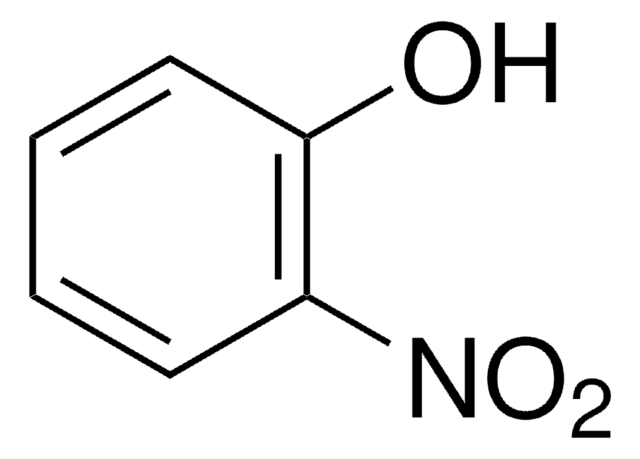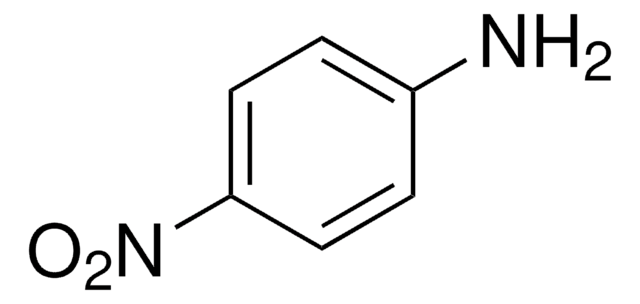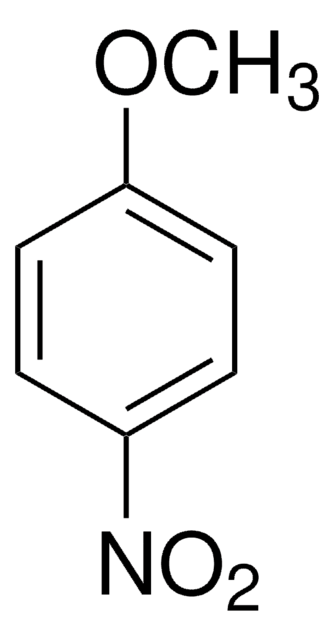Wichtige Dokumente
241326
4-Nitrophenol
ReagentPlus®, ≥99%
Synonym(e):
p-Nitrophenol
About This Item
Empfohlene Produkte
Dampfdruck
0.6 mmHg ( 120 °C)
Qualitätsniveau
Produktlinie
ReagentPlus®
Assay
≥99%
Form
powder, crystals or chunks
Selbstzündungstemp.
541 °F
bp
279 °C (lit.)
mp (Schmelzpunkt)
110-115 °C (lit.)
Löslichkeit
alcohol: freely soluble(lit.)
chloroform: freely soluble(lit.)
cold water: moderately soluble(lit.)
diethyl ether: freely soluble(lit.)
Funktionelle Gruppe
nitro
SMILES String
O=N(C1=CC=C(O)C=C1)=O
InChI
1S/C6H5NO3/c8-6-3-1-5(2-4-6)7(9)10/h1-4,8H
InChIKey
BTJIUGUIPKRLHP-UHFFFAOYSA-N
Angaben zum Gen
human ... UGT1A4(54657)
Suchen Sie nach ähnlichen Produkten? Aufrufen Leitfaden zum Produktvergleich
Allgemeine Beschreibung
Anwendung
Rechtliche Hinweise
Empfehlung
Signalwort
Warning
H-Sätze
Gefahreneinstufungen
Acute Tox. 4 Dermal - Acute Tox. 4 Inhalation - Acute Tox. 4 Oral - STOT RE 2 - STOT RE 2 Oral
Zielorgane
Kidney,Liver
Lagerklassenschlüssel
6.1C - Combustible acute toxic Cat.3 / toxic compounds or compounds which causing chronic effects
WGK
WGK 2
Flammpunkt (°F)
336.2 °F
Flammpunkt (°C)
169 °C
Persönliche Schutzausrüstung
dust mask type N95 (US), Eyeshields, Faceshields, Gloves
Hier finden Sie alle aktuellen Versionen:
Besitzen Sie dieses Produkt bereits?
In der Dokumentenbibliothek finden Sie die Dokumentation zu den Produkten, die Sie kürzlich erworben haben.
Kunden haben sich ebenfalls angesehen
Unser Team von Wissenschaftlern verfügt über Erfahrung in allen Forschungsbereichen einschließlich Life Science, Materialwissenschaften, chemischer Synthese, Chromatographie, Analytik und vielen mehr..
Setzen Sie sich mit dem technischen Dienst in Verbindung.









